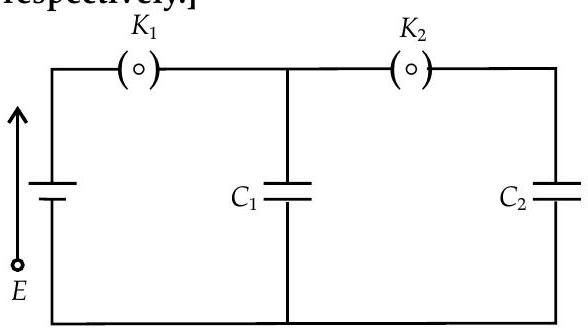Question: Q. 3. In the circuit shown in Figure, initially key is closed and key :
is open. Then is opened and is closed (order is important). [Take and as charges on and and and as voltage respectively.]

Then
(a) charge on gets redistributed such that
(b) charge on gets redistributed such that
(c) charge on gets redistributed such that
(d) charge on gets redistributed such that
[NCERT Exemp. Q. 2.11, Page 12]
Show Answer
Solution:
Ans. Correct options : (a) and (d)
Explanation: When key is closed and key is open, the capacitor is charged by cell and when is opened and is closed, the charge stored by capacitor gets redistributed between and .
So, the charge on gets redistributed such that
As and both are in parallel combination, so their potential will be equal, i.e., . It verifies the answer (a).







